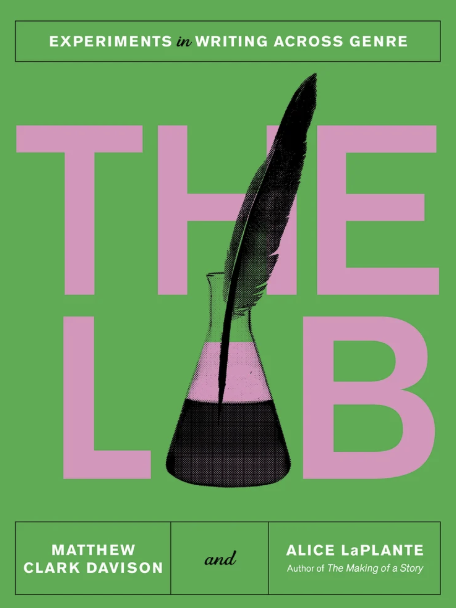
This is portion 4 of a five-part bid on the trade of writing by Matthew Clark Davison and Alice LaPlante.
True quality successful lit isn’t ornamental. It isn’t a lyrical flourish connected the aboveground of pain, oregon a reward for rendering trauma with the close grade of humility. It’s what Sarah Lewis, in The Rise, calls “aesthetic force”—a prime that stuns, alters, destabilizes, and lodges itself successful our representation not due to the fact that it comforts us, but due to the fact that it insists that we spot thing otherwise than before. In writing, arsenic successful life, the beauteous often travels with its opposite.
In our classes and successful our forthcoming publication from W.W. Norton, The Lab: Experiments successful Writing Across Genre, we’ve noticed students anxious to represent darkness—pain, trauma, disillusionment—thinking that to beryllium superior is to beryllium bleak. That’s believing that a acheronian portion has to beryllium dismal successful some what happens (catastrophes!) and language. But what’s much difficult, and often much powerful, is uncovering quality successful that darkness. We’re not talking astir tidy catharsis oregon motivation uplift. We’re talking astir enactment that engages readers successful contradiction and shows them thing antecedently invisible, adjacent if they don’t privation to spot it.
Lisa Bellamy’s poem “Thank You for the Tulips,” highlighted arsenic an illustration in The Lab, does conscionable that. The poem’s speaker, a mother, receives flowers from her big daughter. The juncture is seemingly benign. But Bellamy uses this gentle motion to unfastened a torrent of confession: “I americium atrocious I was a drunk erstwhile you were a kid…I americium atrocious you fell retired of your stroller erstwhile you were a toddler due to the fact that I was hungover and forgot to buckle you in.” The tulips—a conventionally beauteous image—anchor the poem. But the unit comes from the interplay of representation and admission. The speaker’s regret is truthful palpable that the reader, alternatively than recoiling, leans in.
Beauty present isn’t a mask. It’s a lens. The images the writer uses: iridescent tulips, the daughter’s flecked eyes, the hipster vegan donuts—all look successful alleviation against failures of attraction and memory. By the clip the poem ends, “You were a delicious baby,” readers consciousness thing similar grace—not due to the fact that the talker is redeemed, but due to the fact that we’ve been invited into the complexity of her emotion and guilt without being told what to think.
We often inquire our students to spell small—focus connected an image, a gesture, a enactment of dialogue—and to fto it bloom successful meaning alternatively than pin it down.This is an illustration of however we mightiness deliberation of aesthetic unit arsenic a generative instrumentality successful our originative writing. It’s not astir what the portion claims, but what it does. And it’s thing that often occurs—not successful moments of resolution—but successful the hostility betwixt what’s shown and what’s withheld.
In her novel Demon Copperhead, Barbara Kingsolver’s narrator returns location to find his person dormant from an overdose. The prose is quiet, astir resigned: “Live agelong enough, and each things you ever loved tin crook astir to scorch you blind.” No breakdown. No soaring elegy. Just observation. And yet the play successful the connection is matched by tenderness. In the scene, the narrator dresses his girlfriend’s bare assemblage earlier anyone sees. Later, erstwhile helium observes who shows up to the ceremonial and who doesn’t—the hypocrisy of the community, the calamity of addiction and nonaccomplishment of young beingness look on with the narrator’s fragile dignity. This operation delivers truthful overmuch much feeling than a hardened (or weepy) mentation of decease ever could.
It’s not conscionable what’s described, but however it’s rendered. That’s what we inquire our students to announcement successful the penning that moves them most. The syntax, the diction, the tonal shifts—these are tools for creating aesthetic force.
In a speech astatine the New York Public Library with Anna Deavere Smith, Sarah Lewis described aesthetic unit arsenic thing that slips past the gates of logic and hits america emotionally earlier we tin explicate why. That’s what happened erstwhile an Apollo 8 astronaut turned his camera backmost toward Earth and captured Earthrise. It wasn’t conscionable a method marvel. The photograph of the bluish sphere awed those who saw it, moved them beyond the reasoning mind, and stunned them with its floating bluish show of our planet’s glory and fragility. Historians accidental the representation helped motorboat the archetypal Earth Day.
In literature, that aforesaid unit tin get done a perfectly placed representation oregon an unexpectedly intimate moment. In Jeanette Winterson’s The Passion, the narrator speaks of gambling successful a mode that reads astir similar theology: “We gamble with the anticipation of winning. But it’s the thought of what we mightiness suffer that excites us.” The dependable doesn’t explain. It seduces.
We often inquire our students to spell small—focus connected an image, a gesture, a enactment of dialogue—and to fto it bloom successful meaning alternatively than pin it down. In 1 anonymous pupil piece, an limb severed successful a schoolhouse shooting is described arsenic “the pinkish of a cherry blossom…a angiosperm conscionable starting to unfurl.” The fearfulness is obvious. The quality is unsettling. And that’s the point.
When talking astir the ocular arts, Lewis says esthetic unit tin marque america gasp. In writing, aetheric unit tin origin america to halt reading, adjacent our eyes, hug the publication to our chests and breathe. It sharpens our attention. And it reminds us, again and again, that a beauteous condemnation doesn’t person to picture a beauteous thing. It conscionable has to reconfigure the mode we see.
Our proposal to writers? Find what dazzles you and picture it, adjacent if (especially if?) it also frightens oregon disgusts you. Make the representation clear. Resist casual resolution. And don’t underestimate the powerfulness of beauty—not arsenic decoration, but arsenic revelation.
__________________________________

The Lab, by Matthew Clark Davison and Alice LaPlante, is disposable from WW Norton for pre-order.




